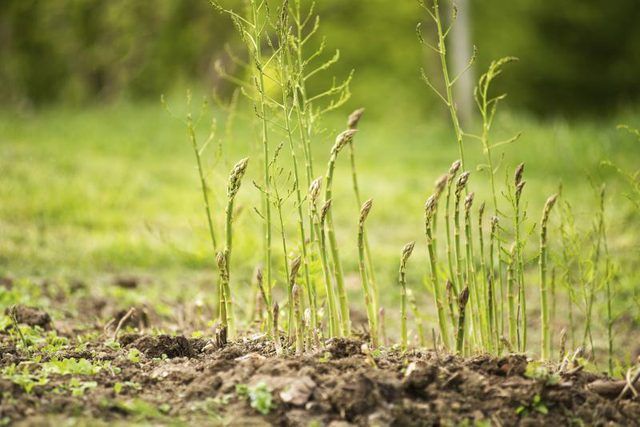Bulbs
Flower Basics
Flower Beds & Specialty Gardens
Flower Garden
Garden Furniture
Garden Gnomes
Garden Seeds
Garden Sheds
Garden Statues
Garden Tools & Supplies
Gardening Basics
Green & Organic
Groundcovers & Vines
Growing Annuals
Growing Basil
Growing Beans
Growing Berries
Growing Blueberries
Growing Cactus
Growing Corn
Growing Cotton
Growing Edibles
Growing Flowers
Growing Garlic
Growing Grapes
Growing Grass
Growing Herbs
Growing Jasmine
Growing Mint
Growing Mushrooms
Orchids
Growing Peanuts
Growing Perennials
Growing Plants
Growing Rosemary
Growing Roses
Growing Strawberries
Growing Sunflowers
Growing Thyme
Growing Tomatoes
Growing Tulips
Growing Vegetables
Herb Basics
Herb Garden
Indoor Growing
Landscaping Basics
Landscaping Patios
Landscaping Plants
Landscaping Shrubs
Landscaping Trees
Landscaping Walks & Pathways
Lawn Basics
Lawn Maintenance
Lawn Mowers
Lawn Ornaments
Lawn Planting
Lawn Tools
Outdoor Growing
Overall Landscape Planning
Pests, Weeds & Problems
Plant Basics
Rock Garden
Rose Garden
Shrubs
Soil
Specialty Gardens
Trees
Vegetable Garden
Yard Maintenance
How to Plant Asparagus Roots
How to Plant Asparagus Roots. Asparagus (*Asparagus officinalis*) provides harvests for 15 to 25 years if you prepare the bed well. It's important to make sure the soil is right because asparagus should not be disturbed after planting, and it takes two to three years for asparagus plants to mature and be ready for harvesting. This perennial...

Asparagus (Asparagus officinalis) provides harvests for 15 to 25 years if you prepare the bed well. It's important to make sure the soil is right because asparagus should not be disturbed after planting, and it takes two to three years for asparagus plants to mature and be ready for harvesting. This perennial vegetable grows in U.S. Department of Agriculture plant hardiness zones 4 through 8, and grows best in soil pH 6.5 but tolerates alkaline soil up to pH 9.0.
Preparing for Planting
Mixing fertilizer and organic matter into the bed before planting provides the best conditions for asparagus. In early spring, when the soil has thawed after winter freezes, remove all weeds and their roots from the planting area. Loosen the soil with a garden fork or rototiller to a depth of 12 to 15 inches.
A phosphate-rich fertilizer helps asparagus grow well. Sprinkle 11-52-0 fertilizer over the soil at a rate of 1/2 pound per 100 square feet. Spread a 2- to 4-inch layer of aged manure or rich garden compost on top of the fertilizer, and mix the fertilizer and organic matter into the soil to a depth of 6 inches.
Dig trenches 12 inches wide and 6 to 12 inches deep in rows 4 feet apart, with a spade. Draw soil from one edge at the base of the trench to the center with a hoe, and do the same on the other side of the trench, creating mounds running along the centers of each trench.
Preparing Asparagus Roots
Removing decay and lightly soaking the asparagus roots prepares them for planting. Male asparagus roots provide the best harvests. "Mary Washington" (Asparagus officinalis "Mary Washington") is an asparagus cultivar that was recommended for many years, but this and other older varieties contain male and female plants. Female plants produce fewer thick spears than male plants, so nowadays male varieties are considered a better choice.
Good quality asparagus plants have eight to 10 large roots and a cluster of buds in their centers. Examine asparagus roots for signs of decay, such as softness and discoloration. Sterilize pruning shears by wiping the blades with a cloth that was soaked in rubbing alcohol, and prune decaying roots 1 inch into healthy tissue. Sterilize the pruning shears again when you've finished.
Soak asparagus roots in lukewarm water for five to 10 minutes before planting.
Planting Asparagus
Plant asparagus with the roots spread out over the planting mounds. Place asparagus roots on the centers of the mounds, which should be 18 inches apart. Spread out the roots of each plant, so they're evenly spaced over the mounds.
Draw the dug-up soil over the roots to bury the tops of the highest buds 2 inches below the soil surface. Water the roots using a garden hose fitted with a soft spray attachment, until the soil is moist to a depth of 12 inches. For the first two years after planting, asparagus needs 1 to 2 inches of water per week during dry weather.
Caring for Asparagus
Over the growing season, fill in asparagus growing trenches as the plants grow, and spread a 4-inch layer of mulch, such as grass clippings, compost or leaves. Draw soil into the trenches with a hoe when asparagus shoots are 4 to 5 inches tall. Cover the lower 2 inches of shoots with soil, leaving 2 to 3 inches above the soil. As the season progresses, continue to fill in the trenches in the same way, until they're level with the surrounding ground.
Spread 4- to 8-inch layer of light organic mulch, such as leaf mulch or hay, around the base of the asparagus shoots to control weeds and conserve soil moisture.